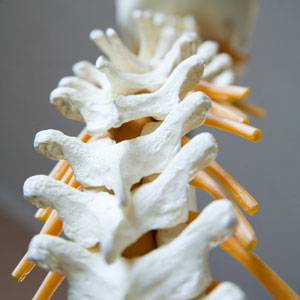Chiropractic Care
Chiropractic care is a natural approach to restoring normal structural alignment and range of motion. Misalignment can cause pain, or it can cause other problems that are more involved. Dr. McDonald manipulates spinal vertebrae and will work on the muscles to restore normal nerve flow. Usually, it doesn’t hurt. If there is any discomfort, it doesn’t persist. What’s ideal for that person might not be 100% pain-free. His goal, however, is to get as close to that as possible.
Feel Great
Techniques and Services
- Thompson Technique
The Thompson Technique, developed by Dr. J. Clay Thompson, has evolved into a system of analysis and means of adjusting the vertebra surrounding the spinal cord using a ‘drop table’. A gentle thrust is applied to the joints which sets the drop piece in motion and targets the specific joint or tissue. The combination produces precise adjustments. The Thompson Technique is so effective that Dr. Thompson was granted a patent for the technique in 1955. Learn more» - Diversified
After identifying which vertebrae have lost their normal motion or position, a specific manual thrust is applied to free up “stuck” spinal joints. Learn more» - Myofascial Release
When the muscles are knotted, this technique allows the spine to be manipulated much more easily.Myofascial Release is a form of soft tissue therapy used to treat myofascial connective tissue restrictions resulting from trauma, inflammatory responses or surgery. This technique involves applying gentle sustained pressure to release tension from fibrous bands of connective tissue (fascia). As described by Andrew Taylor Still, founder of Osteopathic Medicine, it is a treatment which releases myofascial tissues by relaxing contracted muscles, increasing circulation and lymphatic drainage thereby eliminating pain and restoring motion. - Osseus Manipulation
A gentle release technique that aims to restore normal motion and alignment. - Therapeutic Exercises
Dr. McDonald gives exercise and stretching advice to patients. Exercises help make the area being worked on more stable. He may recommend a walking program or regimen at your health club. It’s less likely for the original problem to recur when these exercises are done as prescribed. - Trigger Point Therapy
The primary purpose of Trigger Point Therapy is to reduce the pain that results from hyperirritable spots in skeletal muscle. Trigger points are identified by gently pressing on the surface of the skin, sensing the texture of the underlying muscle.A trigger point is like a knot the size of a pea, buried deep in the muscle tissue. It is made up of lactic acid, a normal byproduct of muscular activity.The trigger point model states that unexplained pain frequently radiates from these points of local tenderness to broader areas.Trigger point therapy uses a combination of stretching and deep manual pressure appled to specific trigger points to relax the knotted muscles and break the cycle of pain. It is often combined with ice, ultrasound or electrical muscle stimulation to encourage the tissue to respond to the treatment. - Ultrasound
This high-tech deep tissue “micro-massage” helps reduce swelling, increase blood flow, decrease pain, reduce joint stiffness and stimulate cell-repair. Learn more»

The New Patient Journey
If you come in with severe pain, we would treat you with electrical stimulation, ice, muscle work and a chiropractic adjustment that is tailored to what your body needs. We may ask you to come in every day for a few days if the pain is intense. Most patients come in on alternate days for 2 weeks or so.
I encourage people to see me with the least common denominator of treatments to keep them feeling well.”Dr. McDonald
When the pain is gone, some patients see him monthly or even yearly. There is no commitment. If a person responds well to care and their spasms are gone, they typically come back if their pain returns, or just to keep in alignment because it feels good!
Experience Comfortable and Safe Care
If you’ve never been to a chiropractor before, you may wonder if it will be uncomfortable. Dr. McDonald puts patients at ease by demonstrating on a person’s arm the amount of force he’s going to use on their neck. Some patients have asked, “Is that it?” after an adjustment, marveling at how comfortable it was.
Chiropractic is also safe. Did you know that chiropractors, in general, pay 20% of what a general practitioner or family doctor pays for malpractice insurance? This lower insurance rate underscores the safety of chiropractic as otherwise insurance rates would be much higher.
Our techniques and services are designed to help you get out of pain and on with your life. Schedule an appointment today!


